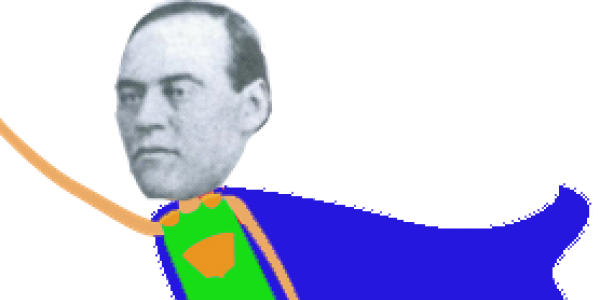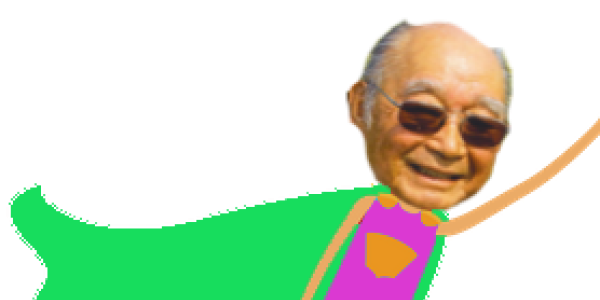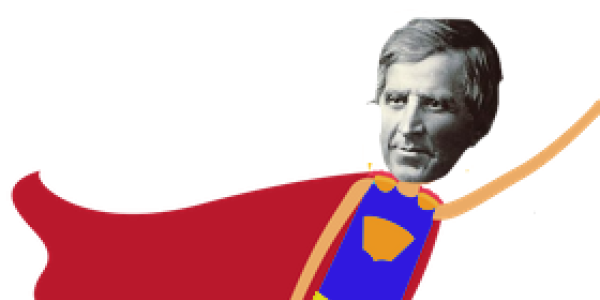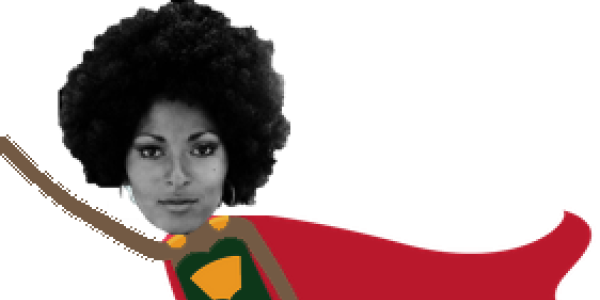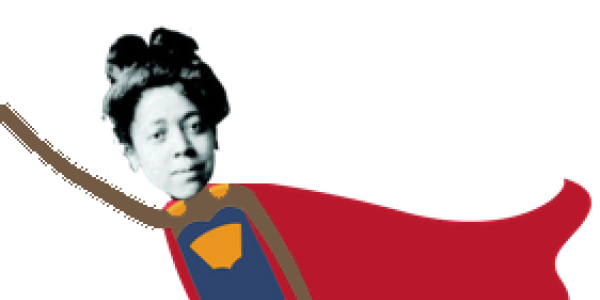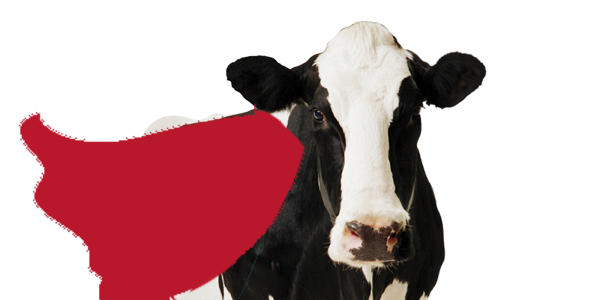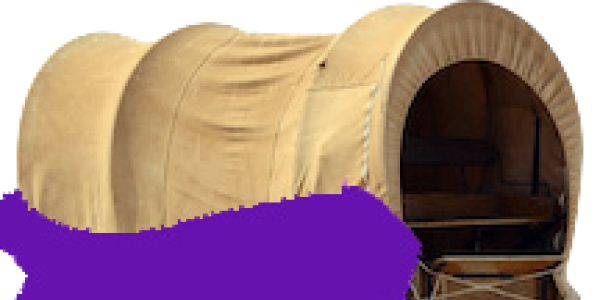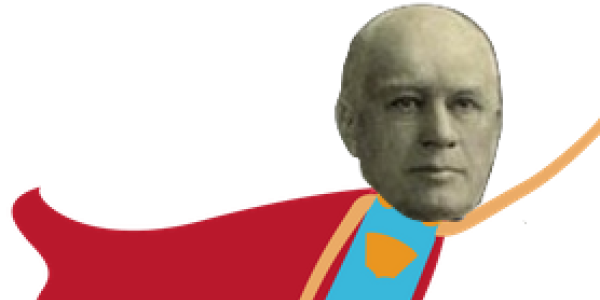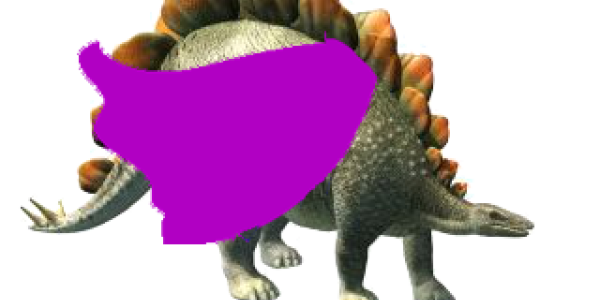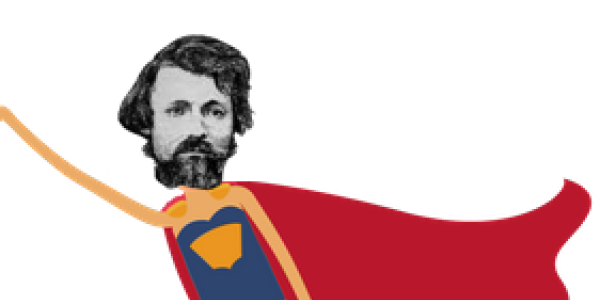It's a bird... it's a plane... it the History Heroes!
This year, NHDC is featured History Heroes connected to Colorado that broke barriers.
Now, the time has come for students to vote on their favorite History Heroes. The winning heroes will be featured on this year's annual button and t-shirt. Students who vote will receive a History Heroes sticker pack.
Theme Poster History Heroes
Don Felipe Baca (1829-74)
Baca broke barriers as one of the first settlers of the Purgatoire River Valley in Baca County, Colorado.
Owl Woman (1810-47)
Also known as Mistanta, she broke barriers by spearheading and maintaining good relations between settlers and Plains Indians.
Bob Sakata (1926-Present)
Sakata, a Japanese American, broke barriers by establishing himself as one of the nation's most respected produce farmers, after spending WWII in an internment camp in Utah.
Temple Grandin (1947-Present)
Grandin broke barriers as a pioneer in the study of animal behavior. She was also one for the first people to share her insights as an individual on the autism spectrum.
Nathan C. Meeker (1817-79)
Meeker broke barriers by establishing the Union Colony, an agricultural cooperative in present-day Greeley. He also championed suffrage in Colorado.
Pam Grier (1949-Present)
Born and educated in Colorad, Grier broke barriers by becoming one of the first African American women to star in an action film.
Minnie Reynolds Scalabrino (1865-1936)
Scalabrino broke barriers as a female journalist and devoted her life to the fight for suffrage.
Justina Ford (1871-1952)
Ford broke barriers as Denver's first licensed African American doctor.
History Heroes of the Month
August: National Western Stock Show
The first National Western Stock Show was held in 1898 to attract tourism dollars to Colorado after the Panic of 1893.
September: The 59ers
When gold was discovered near present-day Denver in 1858 and 1859, the ensuing rush drew thousands of people from across the country to Colorado. This economic and population boom helped lead to the political organization of Colorado as a territory and resulted in the founding of many Colorado towns.
October: The Homestead Act
The Homestead Act of May 20, 1862, was the first act that enabled land acquisition from the public domain with no cost except filing fees. The concepts behind the Homestead Act were to facilitate the growth of an agrarian society by encouraging free farmers as opposed to slave-based agriculture. Land acquisitions from the public domain through Homesteading had a tremendous impact on Colorado’s agricultural development. Nearly all of the private land in Colorado was initially acquired from the US government through one of several acts, including the Homestead Act, that were intended to stimulate settlement of the West by individual farmers and ranchers.
November: Mayor Robert Speer
Robert Speer came to Denver in 1878 as a tuberculosis victim; he spent the next twenty-five years building a political base before being elected mayor in 1904.
Beginning in the late nineteenth century, the City Beautiful movement sought to create a livable urban environment with healthy and agreeable conditions and an abundance of recreational facilities in the midst of rapidly industrializing cities. Cities throughout Colorado undertook City Beautiful programs with varying degrees of success, but it was in Denver under Mayor Robert Speer that the City Beautiful movement found its fullest expression in Colorado.
December: NORAD
The North American Aerospace Defense Command (NORAD), currently located near the Colorado Springs Municipal Airport on Peterson Air Force Base, was built in 1958 at the height of the Cold War to watch for and defend against nuclear air strikes.
Today, NORAD is breaking barriers as forerunners in the development of computers and satellites, and is also famous for monitoring Santa Claus's flight every Christmas Eve since 1955.
Weekly History Heroes
Dinosaur Ridge
Dinosaur Ridge in Morrison became famous after the first ever Stegosaurus fossils, as well as dinosaur tracks, were uncovered in 1877.
Elitch Gardens
Elitch Gardens was founded as a zoological garden, amusement park, and theater in 1890 by John Elitch and his wife, Mary Elitch. When it opened it became the first zoo west of Chicago, and the first amusement park to introduce "kiddie rides."
Santa Fe Trail
The Santa Fe Trail broke barriers as an international overland route of commerce and social integration that joined Missouri with Mexico. William Becknell is credited with "pioneering" the Trail in 1821, though it is more likely the northeastern-most segment of a much older trail system used by the Native Americans, French, and Spanish.
Pierre Antoine & Paul Mallet
On a voyage up the Arkansas River on July 5, 1739, Pierre Antoine and Paul Mallet encounter an Arikara man who agrees to guide them to Santa Fe. This is the first contact between France and Spain in the Rocky Mountain region.


